Table of Contents
Imagine needles tapping rhythmically against skin, not in a sterile studio, but high in the mountains of Buscalan, Philippines. This is the world of Whang-od Oggay, often called the last *mambabatok*, a master of the ancient Kalinga hand-tapping tattoo tradition. For decades, she’s inked visitors and locals alike, carrying forward a practice steeped in history and cultural significance. People travel great distances, enduring challenging treks, not just for a tattoo, but for a piece of living history. They come specifically seeking whang od tattoo designs and meaning, hoping to understand the stories etched into the skin by bamboo and thorn.
The Last Mambabatok: Whangod's Legacy
The Last Mambabatok: Whangod's Legacy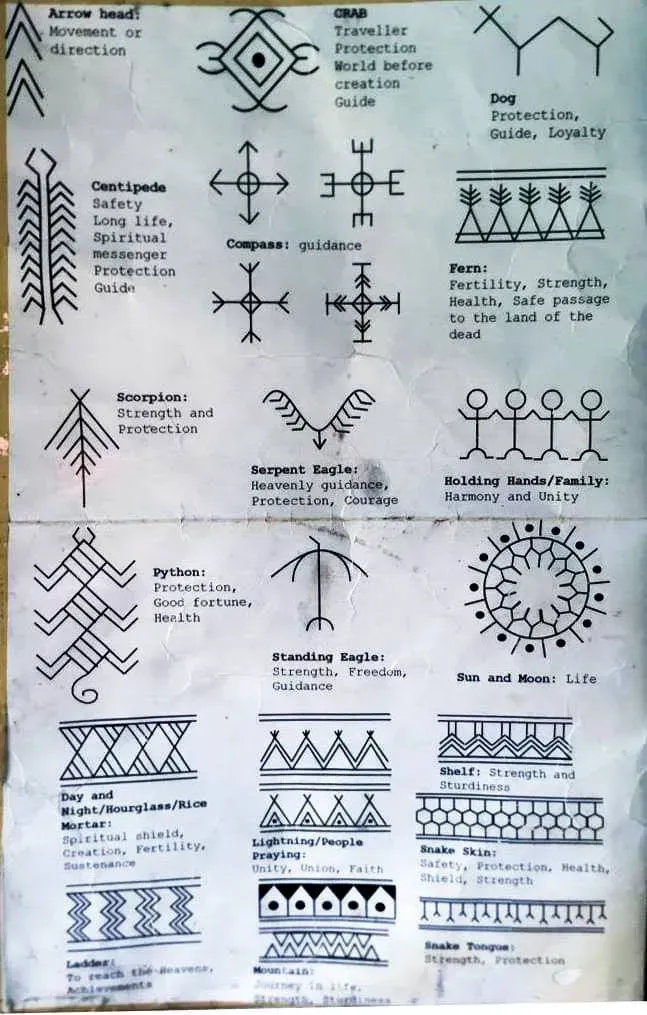
A Living Legend in Kalinga
High up in the mountains of Kalinga, in the small village of Buscalan, lives a woman who has become a global icon. Whang-od Oggay, often referred to as The Last Mambabatok: Whang-od's Legacy, is the most famous practitioner of the traditional Kalinga hand-tap tattooing art. She's reached an age most only dream of, and for decades, she has been the face of this ancient practice. Her hands, weathered by time and ink, tell a story of a tradition that survived colonialism, modernization, and the passage of generations. People started making the arduous journey to Buscalan specifically to receive a mark from her, drawn by the authenticity and history she embodies.
Keeping the Ink Flowing
Being The Last Mambabatok isn't just a title; it's a heavy responsibility. Whang-od didn't have direct descendants who could inherit the craft in the traditional way (it was typically passed down through bloodlines to males). This presented a real risk of the art dying with her. Recognizing this, she made the controversial but necessary decision to train her nieces and grandnieces. This wasn't just about keeping a business running; it was a deliberate act to ensure that the bamboo tap, the thorn needle, and the soot-and-water ink didn't disappear from the Kalinga landscape. Her willingness to adapt the rules for survival speaks volumes about her dedication.
Whang-od's Significance | Impact on Buscalan | Art Form's Future |
|---|---|---|
Preserver of ancient Kalinga tattooing. | Transformed village into a tourist destination. | Training younger generations ensures continuity. |
Beyond the Village Borders
Whang-od's fame, initially confined to the Cordillera region, exploded onto the international stage thanks to documentaries and social media. Suddenly, this elderly woman in a remote village was featured in magazines and sought after by travelers from every corner of the world. This exposure, while bringing much-needed income to Buscalan, also sparked debates about cultural appropriation and the commercialization of a sacred art form. Yet, through it all, Whang-od has remained grounded, continuing her work, a testament to the enduring power of The Last Mambabatok: Whang-od's Legacy.
Traditional Whangod Tattoo Designs and Meaning
Traditional Whangod Tattoo Designs and Meaning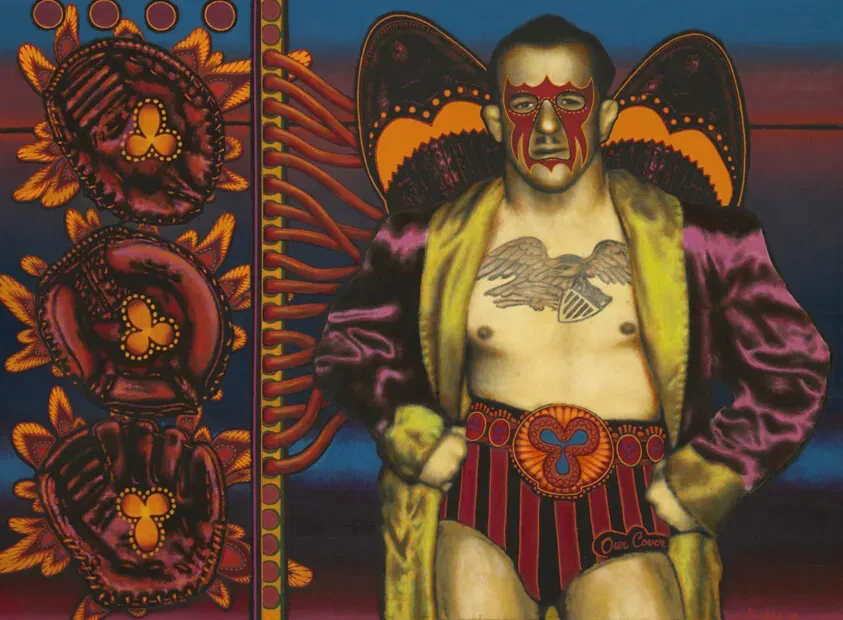
Symbols Etched in Skin and History
When people talk about whang od tattoo designs and meaning, they're not just talking about random pictures. These are symbols with deep roots in Kalinga culture and history. Historically, these tattoos weren't just decorative; they were markers of significant life events, achievements, and status. Warriors earned specific designs for acts of bravery in battle, often involving taking heads (yeah, dark history there). Women received tattoos as symbols of beauty, fertility, or coming of age. Getting inked was a painful rite of passage, a test of endurance that proved one's readiness for adulthood or the rigors of life.
Decoding the Ink: Common Motifs
So, what kind of whang od tattoo designs and meaning are we talking about? You'll see recurring patterns. The centipede (*gayaman*) is popular, often symbolizing guidance and protection, thought to ward off evil spirits. The fern (*nilikoliko*) represents growth, life, and fertility – pretty straightforward symbolism there. There are also geometric patterns, lines, and shapes that can signify things like mountains, rivers, or traps used for hunting. Each line, dot, and shape holds a specific place and purpose, building a narrative on the skin. It’s like a visual language, but instead of paper, the canvas is you.
- Centipede (*Gayaman*): Protection, guidance, spirit ward
- Fern (*Nilikoliko*): Growth, life, fertility
- Snake (*Ulod*): Transformation, healing (historically also power)
- Ladder (*Halop*): Journey, ascent, reaching higher status
- Mountains/Terraces: Connection to land, strength, stability
The Art of HandTapped Tattoos in Buscalan
The Art of HandTapped Tattoos in Buscalan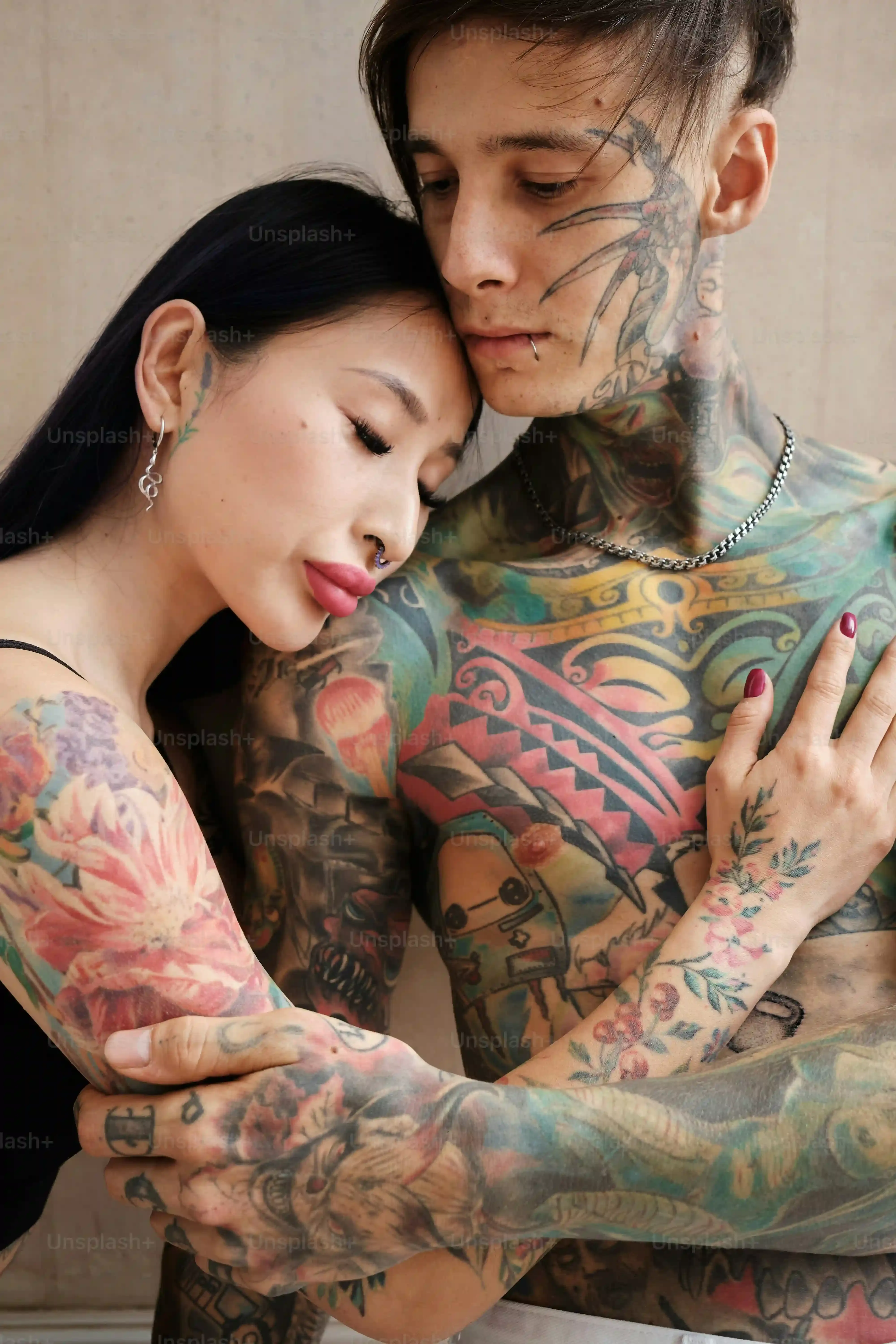
The Tap, Tap, Tap Process
so you've seen the photos, maybe watched a video or two. But actually getting a hand-tapped tattoo in Buscalan is something else entirely. It's not like walking into your local shop. First, you choose your design, usually from a flash book or directly from the *mambabatok* based on traditional patterns. Then comes the setup: a simple stool, maybe a mat on the floor, and the tools laid out. The artist dips a thorn (often from a pomelo tree) attached to a small bamboo stick into the ink. Then, using a thicker piece of bamboo, they start tapping the thorn into your skin. It's a rhythmic, repetitive sound – tap, tap, tap. This is The Art of Hand-Tapped Tattoos in Buscalan in its purest form. It's slow, it's deliberate, and yeah, it stings. A lot.
Tools of the Ancient Craft
Forget electric tattoo machines. The tools used for The Art of Hand-Tapped Tattoos in Buscalan are as old as the tradition itself. You've got two main pieces of bamboo. One is thinner, maybe a foot long, with a sharp thorn tied securely to the end. This is the needle. The other is shorter and thicker, used like a hammer to tap the thorn into the skin. The ink is traditionally made from soot mixed with water. Simple, right? But the skill is in the hands of the artist – the angle of the thorn, the force of the tap, the steady rhythm. It takes years of practice to get it right, to make the lines clean and the ink settle properly. It’s a testament to ingenuity using what the mountain provides.
Tool | Material | Function |
|---|---|---|
Needle Stick | Thin Bamboo, Pomelo Thorn | Holds the thorn, delivers ink |
Tapping Stick | Thicker Bamboo | Used as a hammer to tap the thorn |
Ink | Soot, Water | Pigment for the tattoo |
More Than Just Ink
Getting a tattoo here isn't just a transaction; it's an experience wrapped in the atmosphere of the village. You're surrounded by the sounds of nature, the chatter of villagers, maybe the smell of woodsmoke. The *mambabatok* focuses intently, sometimes humming or chanting softly. Tourists and locals sit side-by-side, waiting their turn or just watching. It feels raw and authentic. There's a sense of connection to the past, to the people who have done this for centuries. It's a reminder that art doesn't always need fancy equipment; sometimes, just simple tools and incredible skill are enough.
More Whangod Tattoo Designs and Meaning Explained
More Whangod Tattoo Designs and Meaning Explained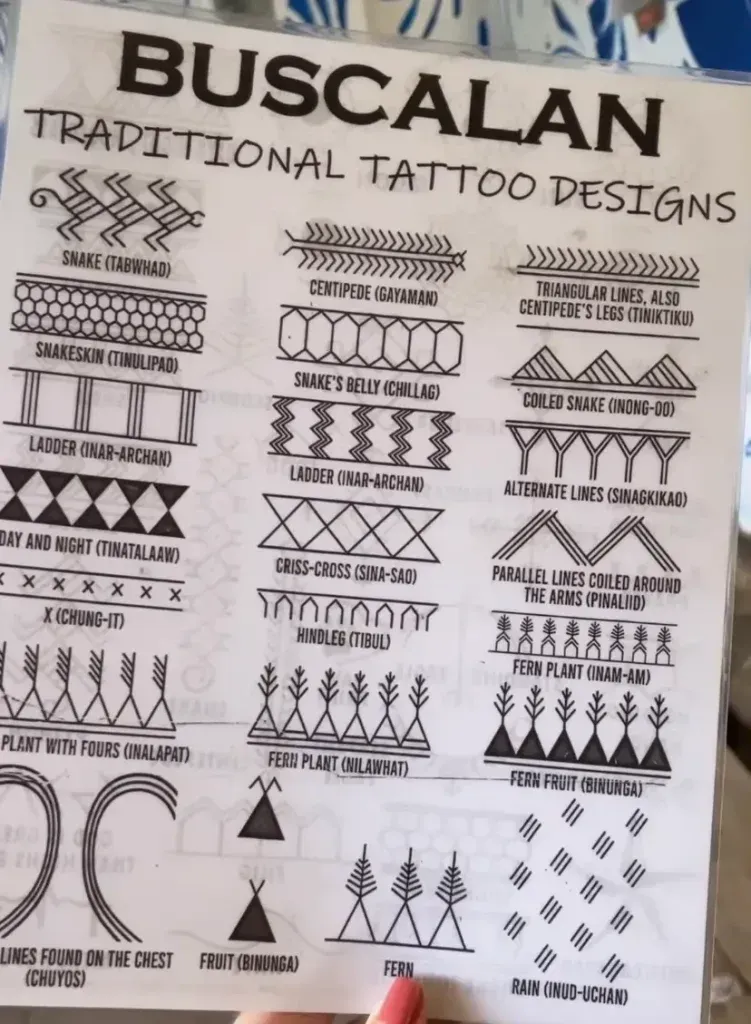
Beyond the Basics: Deeper Meanings
so we've covered the centipede and fern – pretty standard stuff you'll see on many tourists. But there's a whole layer of whang od tattoo designs and meaning that goes deeper, often reserved for locals or those who have spent significant time understanding the culture. Think about the snake or *ulod*. While it can symbolize transformation and healing, historically, it was also linked to power and sometimes represented the coiled strength of a warrior. Then there are designs that look like rice terraces – a direct nod to the landscape that sustains the Kalinga people, signifying abundance and connection to the land. It’s not just a pretty pattern; it’s literally etched geography and survival.
Design | Common Meaning | Historical/Deeper Context |
|---|---|---|
Snake (*Ulod*) | Transformation, Healing | Power, Warrior Strength |
Rice Terraces | Abundance, Connection to Land | Survival, Sustenance |
Eagle (*Lawin*) | Strength, Vision | Often associated with warriors, high status |
Preserving the Whangod Tattoo Tradition
Preserving the Whangod Tattoo Tradition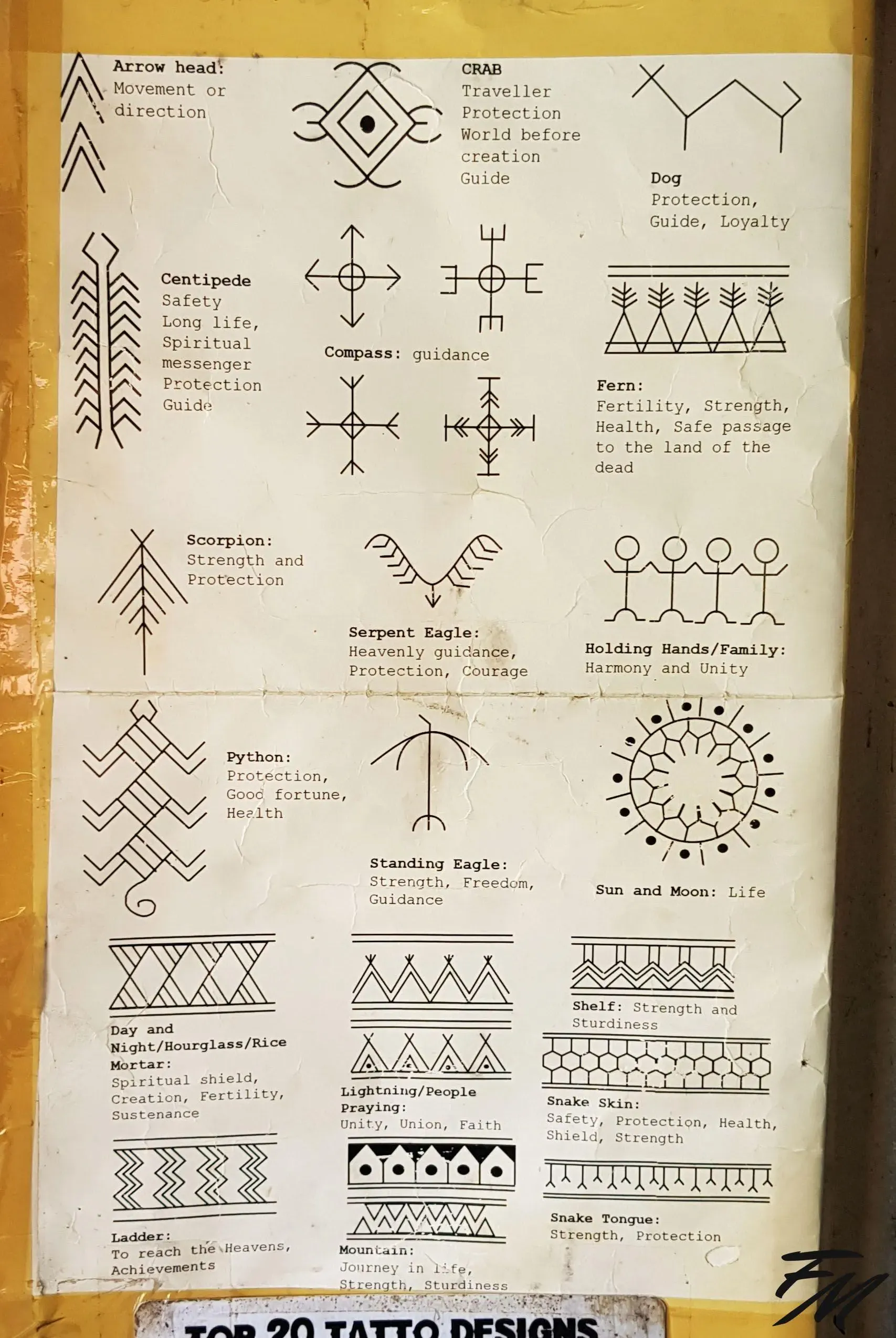
Keeping the Tap Alive
Preserving the Whangod Tattoo Tradition is a complex undertaking, way more complicated than just training a few apprentices. It involves navigating the tricky waters of tourism, cultural sensitivity, and economic realities. While the influx of visitors provides income to Buscalan, it also puts pressure on the tradition. Is it still the same sacred art when people are lining up for a quick souvenir tap? The younger *mambabatok*, trained by Whang-od, face the challenge of honoring the roots of the practice while adapting to the modern world. They use the same tools and techniques, learning the meanings behind the whang od tattoo designs and meaning, but the context has undeniably shifted. It’s a balancing act, trying to keep the essence of the art alive without letting it become just another commodity on the global market.
The Mark of Buscalan: More Than Just Ink
So there you have it. Getting a tattoo from Whang-od or her family isn't like picking flash art off a studio wall. It's a journey, a cultural exchange, and a chance to carry a piece of history. The whang od tattoo designs and meaning embedded within them are living symbols, connecting wearers to the traditions of the Kalinga people. While the influx of tourists brings economic shifts and unavoidable changes, the core of this art form – the rhythmic tap, the natural ink, the ancient patterns – persists. Whether these traditions will fully survive the pressures of modernization remains a question mark, but for now, the ink flows, carrying stories across generations, one tap at a time.